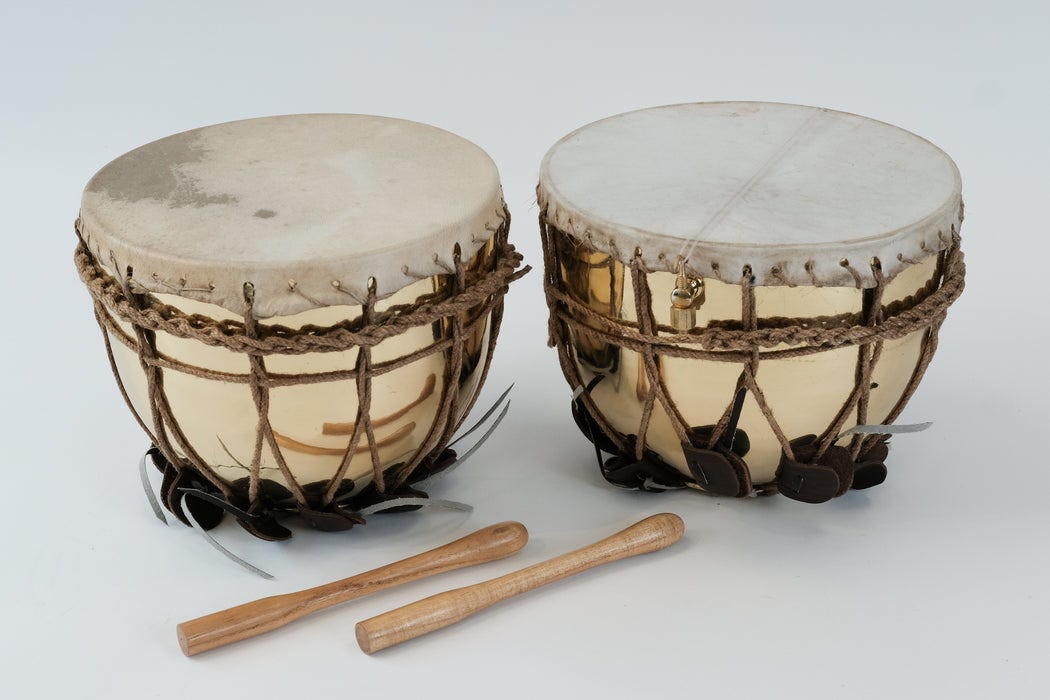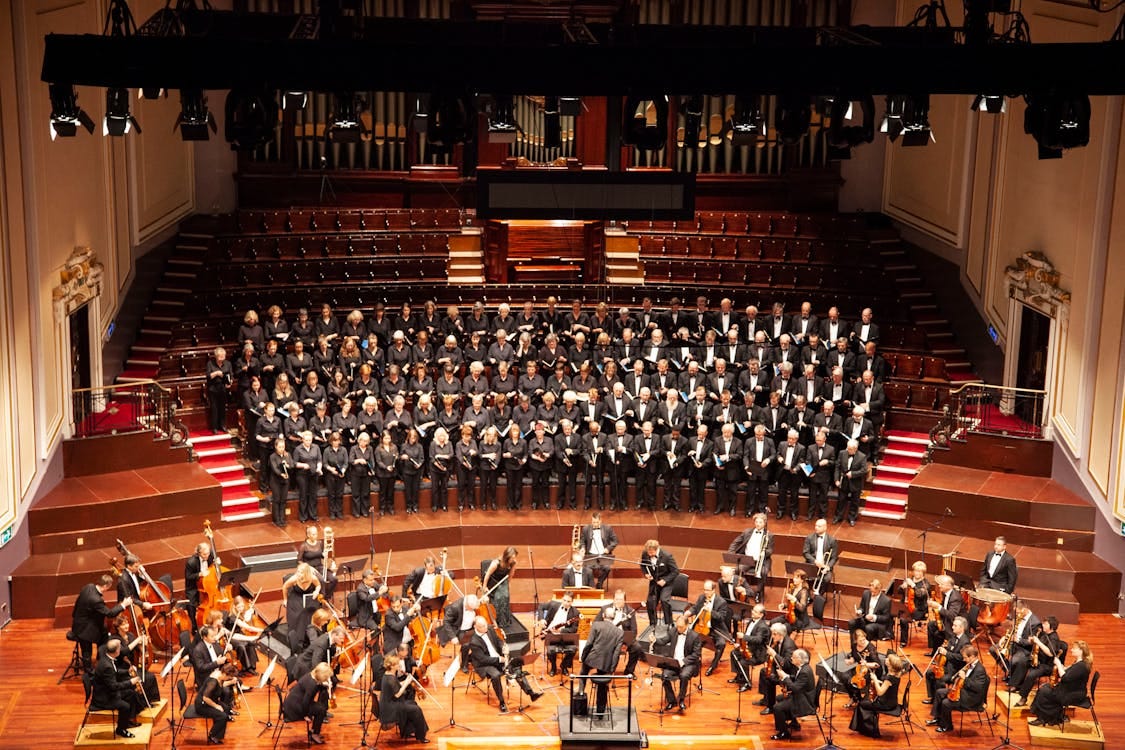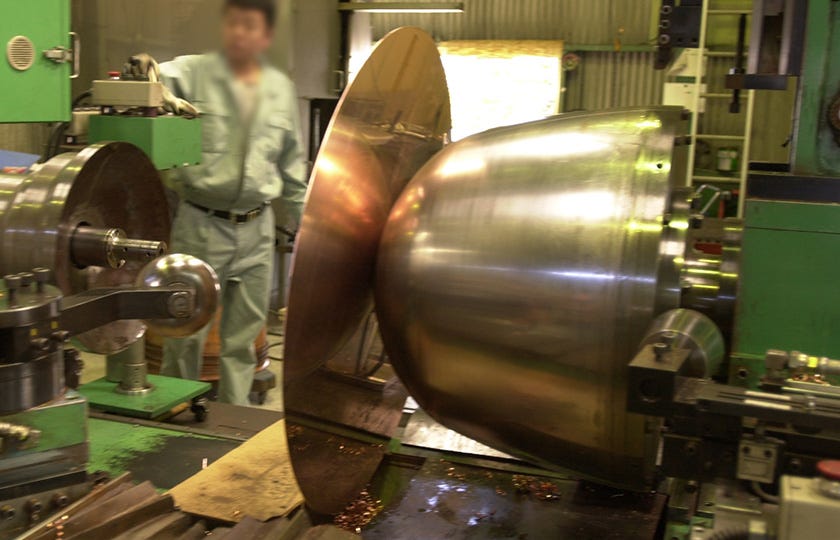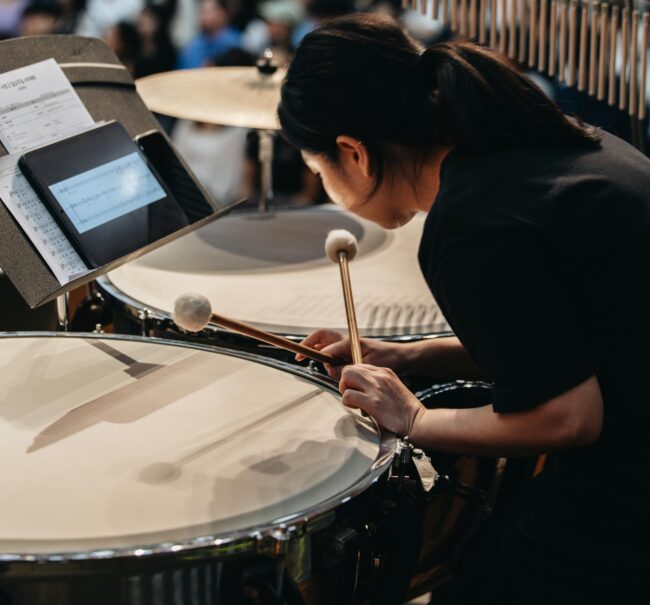The other day a newsletter arrived in my mailbox from a local symphonic orchestra. It was about upcoming concerts, tickets, and seasonal passes. In a final section, the orchestra requested the loyal audience to support them with financial donations, as they need a set of new timpani. The set’s price, disclosed in the newsletter, surprised me, as it was comparable to a small, new car. This made me think, what is so expensive about this glorified drum set (admittedly speaking in ignorance)?
The timpani, often referred to as kettledrums, are iconic percussion instruments that have resonated through centuries of musical evolution. Renowned for their deep, tunable tones, they hold a vital place in classical music orchestras. This article delves into the timpani’s historical development, its role in orchestral settings, the earliest works to feature it, Ludwig van Beethoven’s transformative contributions, and the craftsmanship and costs involved in their production.
Historical evolution of the timpani
The timpani’s origins are ancient, with evidence suggesting their use in religious ceremonies and military contexts across various cultures. The earliest recorded use of a tympanum, a precursor to the timpani, is attributed to the Hebrews in religious rituals (Exodus 15:20). By the 13th century, small kettle drums known as nakers, measuring 20-22 cm (8–9 inches) in diameter, were introduced to Europe via the Crusades, primarily for military ceremonies. These drums, made of wood or metal with fixed-pitch heads, were played in pairs and tuned to a fourth or fifth interval.

By the 15th century, larger kettle drums emerged, often mounted on horseback for royal processions, as seen in Hungary’s cavalry bands. These drums, still untunable, were tensioned by nailing the head to the shell. A significant advancement occurred in the early 16th century when screws replaced bindings, allowing for adjustable pitch and marking the timpani’s transition to a tunable instrument. The 17th century saw timpani move indoors, integrated into court orchestras and opera ensembles, with formalized playing techniques replacing oral traditions.

The 18th and 19th centuries brought further refinements. The Industrial Revolution introduced machine tuning in 1812, followed by pedal mechanisms in the 1870s, known as Dresden timpani, enabling rapid pitch changes. Plastic heads, introduced in the mid-20th century by Remo Company, enhanced durability and weather resistance, solidifying the timpani’s modern form.
Role in the classical music orchestra
In classical music orchestras, timpani are indispensable, residing in the percussion section and providing rhythmic foundation and harmonic reinforcement. A standard set comprises four drums, typically 23, 26, 29, and 32 inches in diameter, covering a range from D below the bass clef to A on the top line. Each drum can produce a perfect fifth, tuned via pedal mechanisms for quick adjustments during performances.
Historically, timpani were used in pairs, tuned to the tonic and dominant notes of a piece’s key, supporting brass fanfares or adding dramatic accents. In the Baroque and Classical periods, composers like Bach and Mozart used timpani sparingly, often for ceremonial or triumphant effects. The Romantic era saw expanded roles, with composers like Gustav Mahler and Hector Berlioz employing multiple timpanists for richer textures, as in Mahler’s symphonies or Berlioz’s Symphonie fantastique (1830).
Timpani can also play melodic lines, though their primary function is to enhance the orchestra’s depth and intensity. Their versatility allows them to evoke thunder, as in Haydn’s The Creation (1798), or drive rhythmic momentum, as in Stravinsky’s The Rite of Spring.

First works to introduce timpani
The timpani’s orchestral debut is often traced to the early 17th century. Claudio Monteverdi’s opera L’Orfeo (1607) includes trumpet and kettledrum music, marking one of the earliest uses in a scored work. However, the instrument’s permanent orchestral integration is credited to the mid-17th century, with Matthew Locke’s Psyche (1673) and Jean-Baptiste Lully’s opera Thésée (1675) as pivotal examples. These works utilized timpani to enhance expressions of rejoicing or support brass in loud passages, establishing their orchestral presence.
By the 18th century, composers like Johann Sebastian Bach further elevated the timpani’s role. Bach’s secular cantata Tönet, ihr Pauken! Erschallet, Trompeten! (1729) features a prominent timpani solo, later reworked in his Christmas Oratorio, showcasing the instrument’s expressive potential.
Beethoven’s relationship with the timpani
Ludwig van Beethoven revolutionized the timpani’s role, treating it as an independent voice rather than a mere accompaniment. His innovative approach is evident in several works. In his Violin Concerto (1806), Beethoven opens with four solo timpani strokes, a bold choice that underscores the instrument’s dramatic capability. In Symphony No. 7 (1812), he tuned the timpani to a minor sixth (A to F), diverging from the traditional fourth or fifth intervals.
Perhaps most striking is his use in Symphony No. 9 (1824), where the timpani are tuned to octave F naturals in the scherzo, creating a striking effect in D minor. This unconventional tuning, combined with a call-and-response pattern with the orchestra, highlights Beethoven’s creative vision. Beethoven’s innovations influenced later composers, setting a precedent for the timpani’s expanded role in orchestral music.
How timpani are made and their cost
Timpani are crafted with a hemispherical or parabolic bowl, traditionally made of copper for its superior acoustic properties and temperature regulation. Less expensive models use fiberglass or aluminum, which offer durability but slightly different tonal qualities. The drumhead, historically made from calfskin or goatskin, is now often synthetic, such as PET film, for consistency and resistance to humidity changes.

The construction process involves stretching the drumhead over the bowl’s opening, securing it with a flesh hoop, and attaching a counterhoop with 6–8 tension rods. These rods, or modern pedal mechanisms, adjust the head’s tension to tune the drum. The bowl’s shape impacts tone—hemispheric bowls produce brighter sounds, while parabolic ones yield darker tones. Sizes range from 12-inch piccolo timpani to 33-inch models, each covering a perfect fifth.
The cost of timpani varies significantly based on material, brand, and configuration. A single fiberglass timpani, such as the Majestic Harmonic Series 23-inch model, costs around $3,000, professional copper sets, such as Yamaha’s Symphonic Hammered Copper Timpani, can exceed $17,000 for four drums. High-end models (up till $30,000) reflect superior craftsmanship and tonal richness, essential for professional orchestras.





